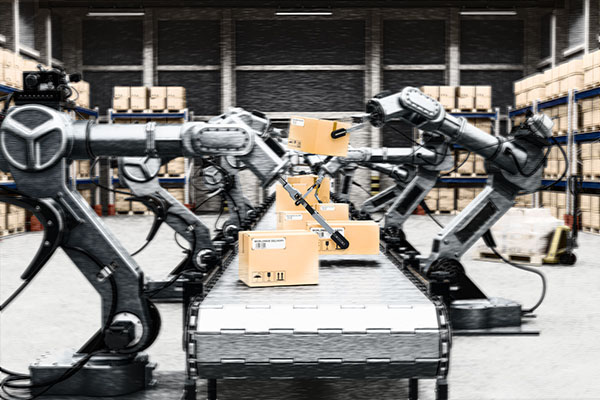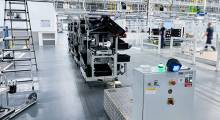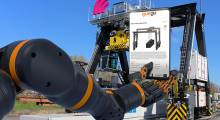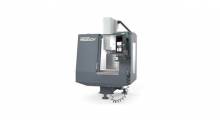COVID-19 is demonstrating the vital role that logistics plays in modern societies. Increasing customer demands and expectations are calling for flexible, 24-hour distribution solutions from all supply chains.
However, labor market challenges and slow adoption of digital technologies are preventing companies from achieving the speed and agility they need to be competitive in this market. As a direct touchpoint in the customer experience, logistics operations need to accelerate innovation and build agility to emerge from the present crisis more resilient and future-ready—and they’re turning to automation as part of the solution.
With the number of direct-to-consumer orders increasing, scaling automation has become even more essential to speed, accuracy and business continuity. Already, many companies have pivoted quickly to adopt new technologies, ways of working, and collaboration models much faster than could have been expected.
We’re seeing an uptick in automated warehouse operations—such as goods-to-person and machine-to-machine order management—that are not only helping companies achieve speed and accuracy in fulfilling consumer orders, but also enabling customization at a micro level.
Additionally, companies are adopting mobility solutions using augmented reality/virtual reality, radio-frequency identification, and increasing their use of robotics. By leveraging these technologies, companies can fulfill customized orders and handle diverse inventories quickly and with minimal human intervention.
There have always been clear benefits of automating the storage and movement of goods throughout the supply chain including lower cost to serve, increased efficiency, improved service levels and 24/7 service. Additionally, with the challenges of COVID, automation can also allow for lower headcounts, better social distancing and better contact tracing.
While many companies recognize these benefits and want to move forward to adopt new technologies, they’re struggling to do so at scale. However, scaling automation is not without challenges. Companies need to create new operating and service models, reskill employees, hire roboticists/system integrators to set up and install a robotics infrastructure, and monitor and service the assets that require specialist knowledge and skills.
In an already capital-intensive industry, buying and servicing robots—depreciable assets—also means acquiring additional expenses. While these expenses are easy to identify, we see companies challenged with making the business case for scaling automation.
We’ve identified several key actions companies can take now to scale warehouse automation capabilities:
Build a comprehensive roadmap. Companies need to start by looking at key business challenges and needs to understand where robotics and automation will have the biggest impact on operations. Automating existing networks can have impacts on all areas of the business, many of them unexpected. With a clear roadmap that starts with laying the foundational groundwork needed to support a range of solutions, companies will be able to quickly focus on areas that have the highest impact and then scale solutions from there.
Choose solutions that generate the most value. While it sounds like a no-brainer, sometimes the best solutions are not the shiny new solutions. Each company’s journey to scaling automation will be different depending on the assets they already own. Once they identify which areas to focus on in the roadmap, companies need to evaluate different solutions and choose the ones that will drive their most important key performance indicators to increase speed, quality, consistency—and boost resilience.
Consider reskilling needs. Enhancing warehouse automation and using robotics can be positive for employment and productivity. Oftentimes, a key benefit of automation is improved employee experience as a result of the reduction of manual tasks. Companies need to consider where they may need to reskill and upskill employees to work side-by-side with robot colleagues and contribute to higher value work. Though some jobs will change, new, value-enhancing roles will emerge as a result of the combined power of humans and machines working together.
Monitor progress. The comprehensive roadmap needs to include a focus on monitoring and updating to ensure that the solutions implemented are delivering the most value. By closely monitoring progress, companies can quickly make adjustments as needed to ensure the desired outcomes are achieved.
Collective automation and robotics will increase warehouse and fulfilment resiliency while increasing productivity, addressing demand challenges, optimizing storage and lowering fixed overhead costs while reducing dependency on people amid labor shortages. Scaling these solutions is no longer an option—it’s a competitive necessity. And those who move quickly will have first-mover advantage and reap significant rewards.
Article topics
Email Sign Up
















